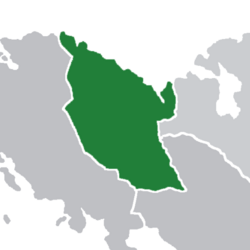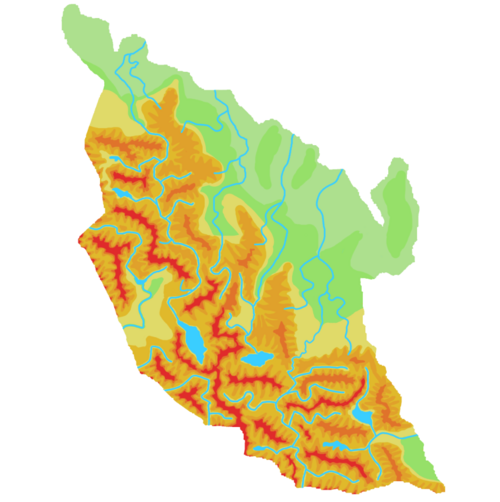Nordmarken-Flachland
Doppelmonarchie Nordmarken-Flachland | |
|---|---|
|
Flag | |
 | |
| Capital | Eichen (Flachland) Mühlenstadt (Nordmarken) |
| Official languages | Nordmarkennen German Flachlanden German |
| Ethnic groups |
|
| Religion |
|
| Demonym(s) | Nordmarkennen Flachlanden |
| Government | Dual Monarchy |
| Dieter I | |
| Christina II | |
| Olaf Peter | |
| Johann Meisner | |
| Area | |
• Total | 478,215 sq mi (1,238,570 km2) |
| Population | |
• 2022 estimate | 71.2 Million |
| GDP (nominal) | 2021 estimate |
• Total | PLACEHOLDER |
• Per capita | PLACEHOLDER |
| Currency | Silber (SLB) |
| Time zone | UTCPLACEHOLDER (PLACEHOLDER) |
| Driving side | right |
| Calling code | +55 |
| Internet TLD | .no |
Nordmarken-Flachland, officially the Doppelmonarchie Nordmarken-Flachland is a medium sized country in the north of Altaris, between Cascadia and Wattenmeer. Nordmarken-Flachland is a dual monarchy jointly ruled by King Dieter I of Nordmarken and Queen Christina II of Flachland. The largest city in the country, Eichen, lies within the region of Nordmarken, and boasts a population of over 4.2 million people. The country is part of the Northwest Altaris Mutual Defense Organization, a international defense and security alliance.
History - Nordmarken
Prehistory
The first evidence of human habitation can be traced to Alte Höhle (Old Cave) near modern Eichen around 250,000 years ago where tools, weapons, and several cave paintings can be found. The first organized human habitation can be found in the valley of Tiefer Wald, where the modern city of Waldheim sits, and is dated to around 50,000 BC. Abundant cave paintings and other preserved evidence are spread throughout the Alderhorst Mountains including the famous body of Eismann, which is the oldest fully preserved human body after having been frozen in ice over 100,000 years ago. Around 40000 BC the first major human settlement, Kleine Altstadt, was founded in the Mühlental Valley at Eissee Lake. Kleine Altstadt was inhabited by the Müger people who had come northwest from modern Alteburg and settled in the relatively warm valley. Soon after the founding of Kleine Altstadt, many other groups of people began to settle within the many valleys of the Alderhorst Mountains, including the Waldmenschen who founded several small villages in the Tiefer Wald Valley. Most of the people inhabiting the region at the time were nomadic, and during the freezing winters would travel north to the warmer region of Midland, which led many early settlements to fail and collapse.
Ancient History
In 4,000 BC, in the Altebergtal Valley, the Bergmänner people settled down and created the first major year-round settlement in the Alderhorst Mountains. This allowed the Bergmänner to develop an advanced culture and civilization, which gained them dominance over the disorganized local tribes and settlements. The culture and civilization of the Bermänner spread throughout east Nordmarken and in 2000 BC the first Bergmänner city was founded, Bergstadt, which served as the capital of the Bergmänner Kingdom, a loose collection of allied tribes, towns, and settlements, all united as Bergmänners. Soon Bergmänner power expanded northward under King Erhard II into the region of Midland.
Müddecken Empire
Colonial History
In 1832 the Grand Duchy of Nordmarken began to lose political stability after a large disease outbreak which crippled the economy and the military. Duke Heinriech
Modern History
History - Flachland
Prehistory
Government
Geography
UNDER WORK The topography of Nordmarken varies greatly throughout the country. In the south, are the Alderhorst Mountains which are covered with snow for most of the year. These mountains provide vital snowmelt for the many life giving rivers throughout Nordmaken. Further north, are rolling hills, which holds the famous Tannenwald Forest.
Biodiversity
Climate
UNDER WORK The climate of Nordmarken varies greatly with the seasons, ranging from below freezing in the winter, to temperatures around 25 c in the summer. The Alderhorst Mountains in the south provide a large barrier for the warm tropical air from the south to enter the country, providing a relatively stable, dry climate.

